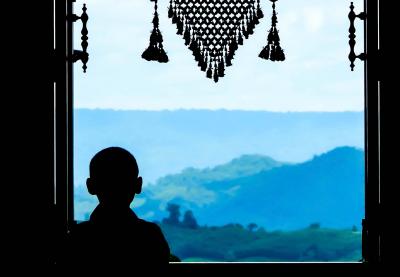While today’s rapid news cycle rarely provides continuous coverage of any one topic, the threats and effects of climate change have made headlines throughout the fall. Most recently, the last few weeks have seen challenges to and stays in the 2015 lawsuit Juliana v. United States. In that case, 21 young plaintiffs argue that “through the government’s affirmative actions that cause climate change, it has violated the youngest generation’s constitutional rights to life, liberty, and property as well as failed to protect essential public trust resources.” If it proceeds through the ninth circuit, the lawsuit could be the first of its kind to bring the issue of global warming before the U.S. Supreme Court.
This news comes on the heels of the Fourth National Climate Assessment, mandated by Congress and released on November 23, which summarizes the ways in which climate change is already harming communities, water, health, agriculture and the economy, among other areas—as well as projected future harm. This news also follows a report issued by the United Nations Intergovernmental Panel on Climate Change that left no room for interpretation: Rising global temperatures will soon create “rapid, far-reaching and unprecedented changes in all aspects of society.” The report urged governments to take immediate and drastic action to curb climate change.
But for too long, we have allowed climate change to slip out of the realm of fact and consequences and into political territory. As educators, part of our work is to show students how to recognize problems and develop solutions. And as adults charged with protecting children, it’s our responsibility to recognize real threats to their health and happiness and do all we can to address them. If we continue to ignore climate change within and beyond our classrooms, I believe we will be held in future judgment for our neglect.
Just this November, the National Science Teachers Association (NSTA) issued a necessary statement to K–12 science teachers with the clear assertion that “no scientific controversy exists regarding the basic facts of climate change.”
There’s a reason it’s needed. In a recent piece for Education Week, Executive Director of the National Center for Science Education Ann Reid notes that more than 80 percent of scientists agree that humans are the largest contributor to climate change. But in 2015, only 4 of every 10 secondary science teachers could correctly identify that number. “It’s not surprising then,” Reid concludes, “that nearly 60 percent of teachers report encouraging their students to debate the causes of climate change—a topic no more scientifically controversial than photosynthesis.”
It is not just science teachers who need to know the facts behind climate change. An understanding of climate change can be taught across the curriculum. Juliana v. United States provides a perfect opening for social studies educators to bring discussions of climate change into classroom conversations about civil and human rights. Statistics courses offer obvious opportunities for studying climate trends, and high school students reading Emerson or Thoreau in their English classes have all they need to begin talking about the relationships among government, individuals, industry and the environment.
So why are so many of us not talking about climate change with students? Part of the problem is that educators have resisted taking sides in what has become a contentious political issue. But we should also recognize that we have been thwarted in our objective knowledge by attacks at the state level that remove the facts about climate change from science standards.
In 2016, Portland Public Schools Board of Education began a comprehensive review of their textbooks. What they found was little to no acknowledgment beyond the reductive “fear of environmentalists.” Students in Oregon were not being informed of the history of climate change, nor were they being empowered to create change. The review ultimately found no textbook company that adequately addressed the issue.
Bill Bigelow, a member of the Portland Public Schools Climate Justice Committee and an editor at Rethinking Schools, writes that the solution is “a grassroots approach to curriculum development—a partnership among educators, parents, environmental organizations, frontline communities and our students.” In other words, it’s one we can all advocate for.
For these changes to occur, we must take a stand as educators that this issue is vital to the success of our students. Teaching is, in large part, an attempt to give children a strong footing in an unknowable future. We can’t do that if we remain silent as the ground erodes beneath them.
Lindell is an artist and teacher. She makes art with K–8 students at the Winchester School in Winchester, New Hampshire.
